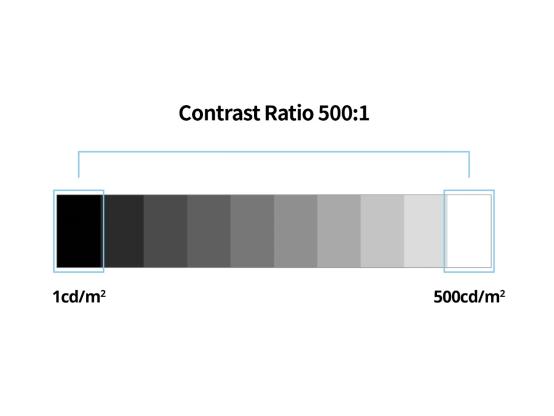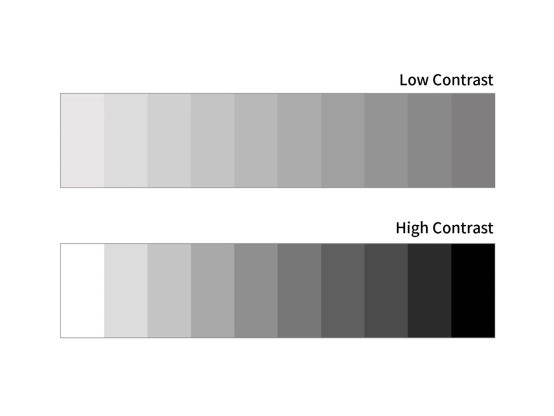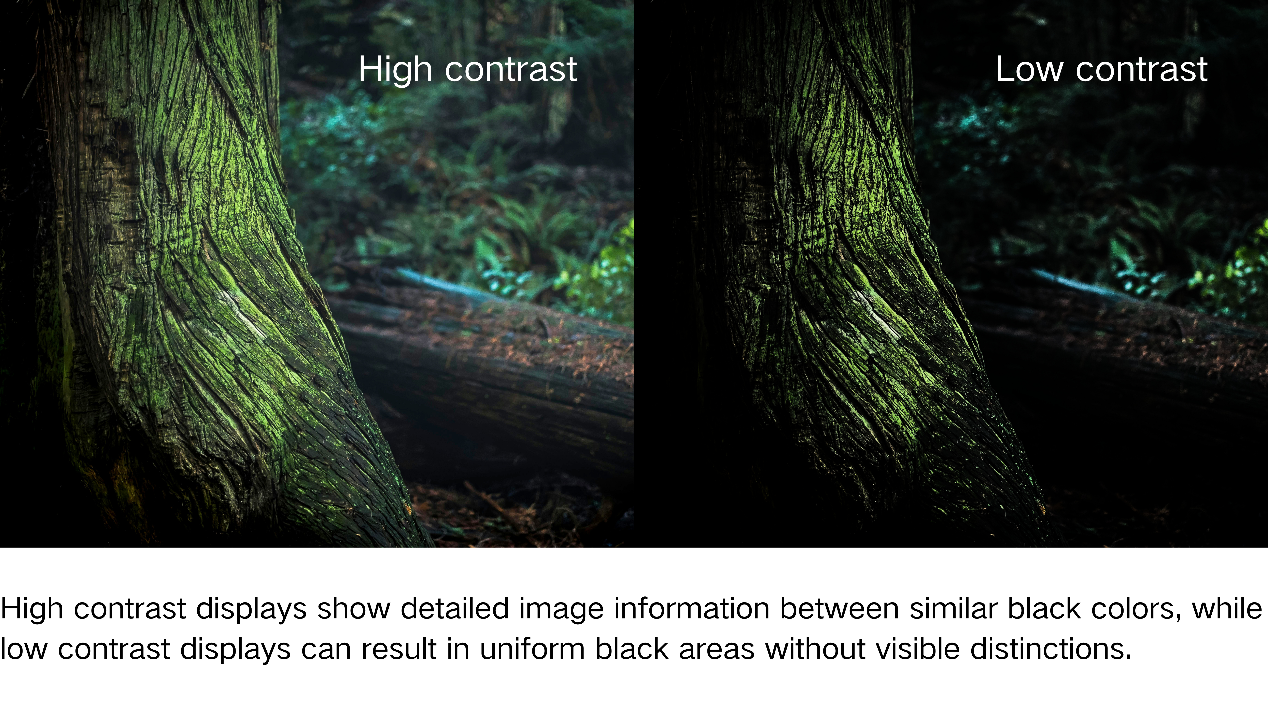Time:2024-05-08 10:58:12
Contrast Ratio is a key term we often mention, and it generally appears in two scenarios.
One is as part of the hardware specifications of a display, where Contrast Ratio is an inherent quality of the display that users cannot adjust. It is typically directly listed in product specifications, presented in a form like "500:1". In numerical terms, a higher value in the first number is better, usually indicating a higher contrast ratio.
The other scenario is as an adjustable parameter in image editing software and display adjusters. Adjusting "Contrast" can alter the brightness and darkness contrast of the image. In this case, a higher contrast level is not necessarily better, as different users may adjust the contrast based on personal preference or specific needs.
Here, we are discussing the first scenario, the inherent hardware specification of a display—Contrast Ratio.
What is Contrast Ratio?
The Contrast Ratio of a display refers to the ratio between the brightest white and darkest black that can be displayed at the same point on the screen. It is used to measure the levels of brightness that a display can provide.
For example, if a display has a maximum brightness of 500 nits and a minimum brightness of 1 nit, the Contrast Ratio would be expressed as 500:1. This means that the display can produce 500 different levels of brightness.


What are the benefits of high contrast?
High contrast in a display means it can provide a wider range of brightness choices; it can enhance the screen's ability to show light and dark areas, increasing the depth of the image. Users can clearly observe details in both dark and light areas, catching even subtle differences between very close black colors.

OLED inherently possesses outstanding contrast. OLED displays can achieve independent pixel-level illumination and shut-off, allowing OLED to completely turn off pixel light sources when displaying black, producing absolute black. In contrast, LCD displays require a backlight to control light transmission through the liquid crystal layer, making it difficult to completely block backlight leakage, resulting in light leaks when displaying black.
Micro-OLED utilizes OLED as the display element, with single-crystal silicon as the backplane, featuring characteristics such as thinness, active emission, high contrast, wide viewing angles, fast response, and low power consumption. Compared to traditional OLED, micro-OLED excels in pixel density, with pixel counts in the same size increasing up to ten times that of traditional OLED, displaying clear, lifelike images.
Lumicore Technology's independently designed and manufactured micro-displays utilize micro-OLED technology, incorporating the proprietary FSL technology, and achieving an ANSI contrast ratio of 900:1, surpassing the industry standards for micro-OLED.
About ANSI
ANSI contrast ratio is a measure of display quality defined by the American National Standards Institute. It calculates the contrast of a display by comparing the brightness of the darkest and brightest colors. A higher ANSI contrast ratio means the display can show clearer and more vivid images.